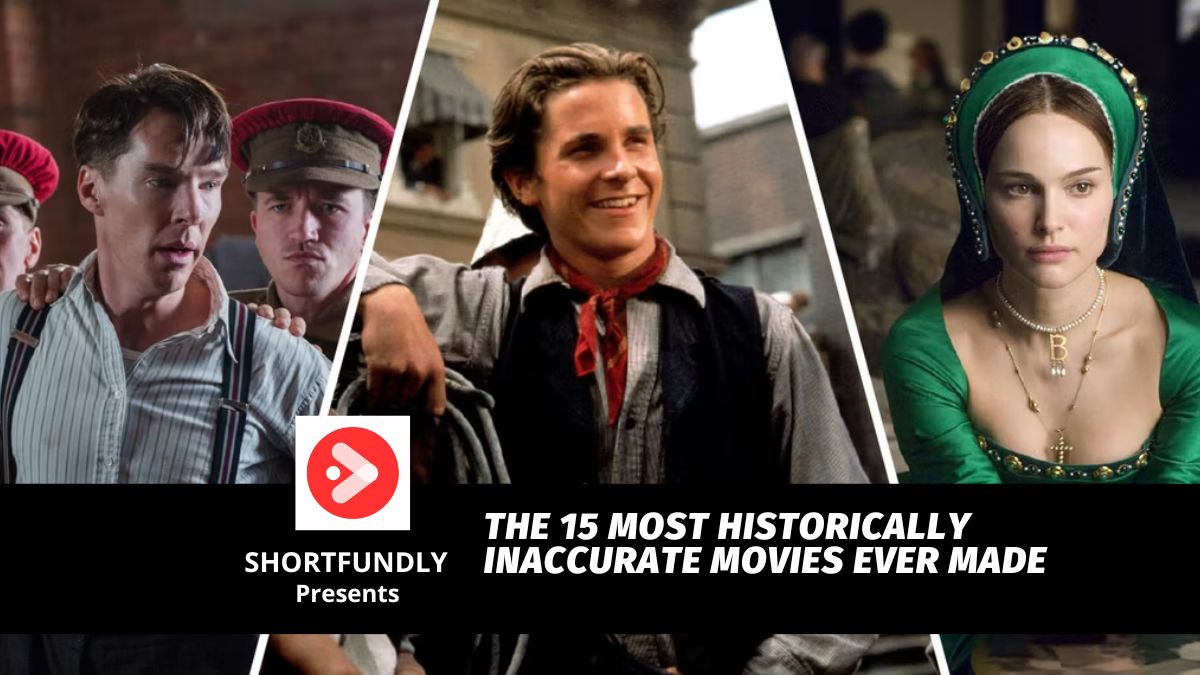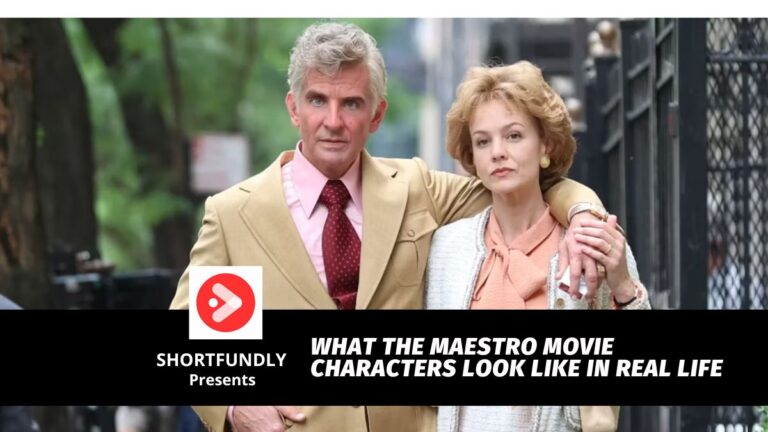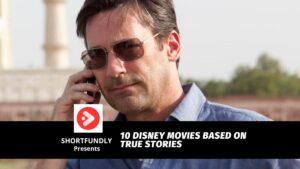Table of Contents
Hollywood is renowned for taking creative liberties with its films, a practice not limited to adaptations from books but extending to historical projects depicting significant events or the lives of notable figures. The need to condense narratives into a viewable runtime often leads to the omission of less crucial details and the amplification of more captivating elements. While this approach serves the purpose of creating appealing and engaging stories, it frequently results in historical inaccuracies and deviations from the actual events or lives being portrayed.
Over the years, Hollywood has produced a multitude of historically inaccurate films, where the deviations from reality go beyond tweaking minor details. Instead, these movies present alternate realities and, in some instances, entirely different storylines than what actually occurred. While such deviations may be acceptable for artistic expression, they pose a challenge when viewers mistake fiction for fact. This list highlights some of the most historically inaccurate movies that have graced the silver screen.
Sponsered English Shortfilm Playlist
The 15 Most Historically Inaccurate Movies Ever Made
Newsies (1992)
The historical accuracy of over a dozen boys singing and dancing in the streets of New York City to protest an unjust increase in the price of newspapers may be questioned. Remove the musical elements, and you find a narrative loosely inspired by the genuine Newsboys Strike of 1899. Newsies follows the fictional character Jack Kelly, a hobo, and his group of misfits as they go on strike, challenging Joseph Pulitzer and his newly implemented, unfair newspaper regulations.
Beyond the 1992 film, Newsies also exists as a Tony award-winning Broadway musical. Despite the rallying cry of “And the world will know!” in the production, it might not be widely known that the film amalgamates different real people to create characters, alters the ending of the strike, and portrays Joseph Pulitzer in a manner inconsistent with historical reality.
The Sound of Music (1965)
Musicals often prioritize entertainment over strict adherence to historical accuracy, and The Sound of Music is no exception. The story revolves around the Von Trapp Family singers, renowned before World War II. While many are familiar with the narrative of the musical, which involves the postulant Maria joining the family as a governess, marrying the widowed naval captain Baron Von Trapp, and eventually fleeing Austria to escape the Nazi invasion by crossing the Alps to Switzerland, historical inaccuracies are present.
In reality, the family only needed to cross the railroad tracks and board a train to reach Italy. The musical also alters the names and ages of the children, omits three children that Maria and Baron later had together, and misrepresents the timing of their marriage, which occurred a decade before the Nazi invasion.
Pearl Harbor (2001)
The cinematic portrayal of the attack on Pearl Harbor in 2001, directed by Michael Bay and featuring Ben Affleck, Jennifer Garner, and Alec Baldwin, diverged significantly from historical accuracy. While the movie depicts the actual attack, many aspects deviate from reality.
In the film, fictional characters Danny and Rafe, survivors of the bombing, are portrayed as being sent to Tokyo to retaliate, a mission that did not occur in real life. The movie also falsely depicts Japanese planes firing on civilians and a hospital, actions that were not part of the historical events. Additionally, a significant historical inaccuracy and insensitivity in Pearl Harbor is evident when President Roosevelt, in the film, stands up from his wheelchair to deliver a dramatic speech, contrary to the reality of his physical limitations.
The Other Boleyn Girl (2008)
Numerous films and series explore the tumultuous marriages and relationships of King Henry VIII. Directed by Justin Chadwick and based on Philippa Gregory’s novel, The Other Boleyn Girl takes creative liberties with the historical narrative surrounding King Henry’s relationships with Anne Boleyn and her sister Mary.
In contrast to the film’s portrayal, Mary was older than Anne and did not have any children with the king. The romantic involvement between Mary and the king had concluded long before he turned his attention to Anne. The creators chose to overlap the two stories to add intrigue. Additionally, the depiction of Anne spending “a few months” in France in the movie is inaccurate; historically, she resided there for seven years.
The Last Samurai (2003)
Edward Zwick directed and co-produced the epic action period drama, The Last Samurai, which unfolds during the 1877 Satsuma Rebellion in Japan against Westernization. The film tends to overly romanticize Japanese culture, especially the portrayal of samurais. A notable historical inaccuracy is the presence of American Civil War veterans in Japan; Captain Nathan Algren, played by Tom Cruise, is entirely a fictional character. Furthermore, the depiction of ninjas is historically inaccurate as they no longer existed during that time. Additionally, the film’s exclusive focus on sword fights disregards the widespread use of guns and rifles during that period.
The Imitation Game (2014)
The emotionally charged and refined historical thriller, The Imitation Game, directed by Morten Tyldum and written by Graham Moore, is set during World War II. Benedict Cumberbatch stars as the real-life mathematician and codebreaker, Alan Turing, who decrypts German intelligence messages to aid the British government. The film depicts Turing inventing the electromechanical machine, referred to as The Christopher in the movie, inspired by his childhood friend.
In reality, the machine was named Victory, and its creation was a collaborative effort involving various machines over the years, including contributions from Polish cryptanalyst Marian Rejewski in the 1930s and mathematician Gordon Welchman. Criticism of the film includes its alleged downplaying of Turing’s homosexuality by emphasizing his relationship with fiancée Joan Clarke, played by Keira Knightley. Turing was also described as more sociable and humorous than portrayed in the movie, and there is no conclusive evidence supporting the film’s depiction of him taking his own life.
Feature your entire movie cast on Shortfundly’s weekly podcast show. Promote your creation with us. To know more, click here.
Gladiator (2000)
The epic film Gladiator, which marked a significant milestone in Russell Crowe’s career and won Best Picture at the 73rd Academy Awards, deviates significantly from historical accuracy in its portrayal of figures and events. Firstly, the character Maximus, the gladiator played by Crowe, is entirely fictional. Regarding the Roman Emperor Marcus Aurelius, portrayed by Richard Harris, he did not meet his demise at the hands of his son Commodus, played by Joaquin Phoenix; Marcus Aurelius died of chickenpox. The film also exaggerates Commodus’ cruelty and perversion, and contrary to the movie’s depiction of a fatal duel with Maximus, Commodus was historically killed by strangulation in his bath by his lover.
Argo (2012)
Directed, produced, and starring Ben Affleck, the political thriller Argo achieved box-office success and won the Academy Award for Best Picture. The film revolves around the rescue mission of six American diplomats in Tehran led by CIA operative Tony Mendez in 1979. While the movie glorifies Mendez, it downplays the role of the Canadian government in the hostage situation, particularly Ambassador Taylor, despite the entire event being known as the Canadian Caper.
The actual involvement of the British and New Zealand embassies is marginalized, and indirect blame is shifted. The airport scene in real life was less dramatic than portrayed for cinematic effect. Additionally, the Hollywood sign, depicted as dilapidated in the film, had been repaired in 1978. Iranian President Abolhassan Banisadr argued that Argo failed to show the majority of his cabinet advocating for the release of the diplomats.
Napoleon (2023)
Without a doubt, Napoleon Bonaparte, one of the most intriguing historical figures, has long been a subject of fascination for historians and the general public. Ridley Scott, similarly captivated by the Corsican’s story, seized the opportunity to create his epic film, “Napoleon,” released in 2023. The movie chronicles Napoleon’s journey from a soldier to the Emperor of France and, ultimately, his fall from grace leading to exile.
However, “Napoleon” faced criticism for historical inaccuracies, drawing attention from keen observers. Viewers noted discrepancies such as the absence of a frozen lake at the Battle of Austerlitz, Napoleon not witnessing Marie Antoinette’s execution, and the portrayal of Napoleon as a short man, contrary to the historical reality of him being of average height for his time. Despite Ridley Scott’s defiance in response to critics, these historical inaccuracies are widely perceived as a drawback.
Elizabeth (1998)
“Elizabeth,” a British biographical period drama directed by Shekhar Kapur and starring Cate Blanchett as Elizabeth I of England, explores the early years of the queen’s reign. However, the film took creative liberties with historical facts, distorting timelines and portraying the monarch as a weaker character than she was. Some inaccuracies include altering dates to include events that occurred much later and placing Elizabeth under house arrest at Woodstock Palace instead of Hatfield House.
In contrast to the film, Elizabeth was fully aware that her love interest, Robert Dudley, Earl of Leicester, was married. Dudley remained a close supporter until his death, and there is no historical evidence of him conspiring against her. Mary of Guise did not die from an assassination by Walsingham but from fluid retention, and she was not related to Francis, Duke of Anjou. Additionally, Kat Ashley, Elizabeth’s lady-in-waiting, was not the same age as portrayed in the film but at least 20 years older than the queen.
300 (2007)
Directed by Zach Snyder and inspired by the comic series by Frank Miller and Lynn Varlet, “300” depicts the historical Battle of Thermopylae in 480 BC between Spartan warriors and the Persian army. While the film dramatizes the events, it takes creative liberties, such as exaggerating the Spartans’ physiques with toned abs and basing their fight choreography on modern Filipino martial arts. The portrayal of Spartan academics’ views on pederasty differs from historical records, and the film gives a supernatural quality to Persian King Xerxes, depicting him in a distinctive manner that drew criticism from the Iranian Academy of the Arts.
Pocahontas (1995)
Disney’s animated classic “Pocahontas” takes liberties with historical accuracy by presenting a romanticized version of the story. In the film, Pocahontas falls in love with English Captain John Smith and plays a crucial role in maintaining peace between her Algonquin tribe and the English settlers. However, in reality, Pocahontas was just a child when Smith arrived, and she later married someone else before passing away at the age of 22. Furthermore, her real name was Amonute, and “Pocahontas” was a nickname meaning “playful one” or “ill-behaved child.”
Braveheart (1995)
“Braveheart” narrates the tale of Scottish warrior William Wallace, portrayed by Mel Gibson, and his efforts to liberate his country from English oppression. Despite being labeled as a historical war drama, the film incorporates several inaccuracies. In the movie, Wallace is depicted as hailing from humble beginnings as a poor Highlander, but historical evidence suggests that he was actually of noble birth. Another inaccuracy involves Wallace’s romantic involvement with Isabella of France, the wife of Edward II, which is considered unlikely by historians. Additionally, the film alters the historical ending, as Wallace was historically subjected to a brutal process of drawing and quartering rather than a simple beheading.
Shakespeare in Love (1998)
“Shakespeare in Love” explores the journey of the renowned English playwright William Shakespeare to success, but the film includes several historical inaccuracies. Notably, characters in the movie are seen drinking from modern beer glasses, and the depiction of Queen Elizabeth attending a public play contradicts historical practices, as the Queen would typically attend private performances at her court. Additionally, the film overlooks the impact of the bubonic plague, which would have led to the closure of theaters. Lastly, the movie suggests that Shakespeare drew inspiration for “Romeo and Juliet” from his own forbidden romance experiences, and it features Viola playing Juliet on stage, despite the historical prohibition of women performing on stage during that era.
Alexander (2004)
“Alexander” faced potential legal issues over its portrayal of Alexander the Great as bisexual, with Greek lawyers initially considering a lawsuit. However, they dropped the case after determining that the depiction was not as explicit as feared. The film includes inconsistencies such as merging three major battles, the Battle of the Granicus, the Battle of Issus, and the Battle of Gaugamela, into one. Moreover, various events in the movie, while possibly based on historical occurrences, are portrayed differently, involving different individuals or taking place in alternate locations. Since its 2004 premiere, the film has seen four Director’s Cuts released in an attempt to address some of these inaccuracies.
Note:
*Shortfundly is hiring for multiple roles in Chennai. Start referring your known connections to these openings*. Check it out – https://lnkd.in/erZm6rzh
About Shortfundly
Shortfundly is an OTT marketplace platform available to share the best short films and web series through global multi-platform network. Their editorial platform enables global audience to easily discover, watch, and share unique contents anywhere on their desktop, connected TV and mobile devices.
If you are planning to release and earn on an OTT platform, learn how to distribute your short film via Shortfundly.
For publishing an advertorial article about your digital news/product launch/ short film/web series/album song on our website, drop an email at [email protected]
Hey Cinephiles! We welcome guest blogging on our platform. Do share your article with us.
Check out our Shortfundly YouTube channel for other interesting podcasts & interviews with filmmakers.
To watch unlimited premium short films & web series, Download the Shortfundly mobile application now available on Google Play Store and Apple App store.






